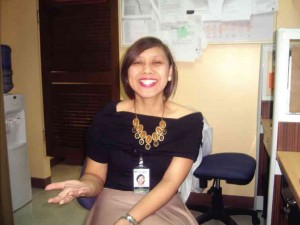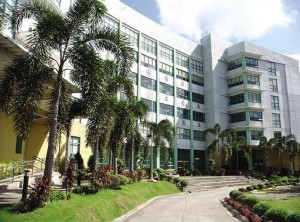La Salle encourages speech pathology practice outside Metro
De La Salle Health Sciences Institute (DLSHSI) in Dasmariñas City is the latest of only four schools to offer speech pathology as a college course, its program barely six months old. The others are the University of the Philippines (UP) Manila, the University of Santo Tomas (UST) and Cebu Doctors’ University in Mandaue City.
Aileen Atienza, chair for professional education of the newly created speech pathology department in the College of Rehabilitation Sciences, says the college aims to be holistic. It already offers physical and occupational therapy. “Speech pathology completes the combo,” she says.
De La Salle University launched the program in the first semester of the current school year, 2014-2015, and immediately drew 39 students. UP had only four or six enrollees when it started its program 38 years ago.
The course will teach students the basics of speech improvement and development in voice, language, articulation, undulation, among other things, in the five years it will take them to earn their degrees.
Like UST, DLSHSI offers a five-year program leading to a Bachelor of Science in Speech and Language Pathology degree, per the Commission on Higher Education’s guideline. UP, which has its own charter, has a four-year program.
Article continues after this advertisement“We cater to children’s developmental and speech defects, and to adults’ dysarthria (a motor speech disorder) and aphasia (a disorder caused by damage to the parts of the brain that control language),” Atienza says.
Article continues after this advertisement“When the students graduate, we expect them to have the skills to treat these patients. And we are adopting a school, Dr. Jose P. Rizal Elementary School (also in Dasmariñas), for internship purposes,” she says.
Not doctors
At DLSHSI, the first four years will be devoted to the theoretical aspect of the course. The fifth year is for thesis and internship.
Atienza is a speech pathology graduate of UP Manila and is a lifetime member of Collegiate Association of Speech Pathologists and Philippine Association of Speech Pathologists.
She says speech pathologists are not doctors. In the pediatric setting, they are “teachers”; in geriatrics, they’re called “ma’am.”
Because the program is based in Dasmariñas, she says it will be easier for students from neighboring provinces to enroll in the course, eliminating the inconvenience of having to go to Manila.
She says the school encourages provincial practice. Atienza herself is from Batangas province.
Speech pathology was not Atienza’s original choice for a career. She shifted from Bachelor of Science in Biology in her third year. Wanting to help and work with children prompted the career change.
“I’ve always wanted to be a pediatrician. That’s my passion,” she says.
The course is difficult, she says, as a student has to “develop critical thinking. You have to think of your patients because it is the quality of their lives that you’re affecting.”
A speech pathologist’s job, she says, is basically to diagnose speech and language disorders, such as delayed speech and poor articulation, as well as to provide treatment in three major settings—hospital, school and clinic.
“Sometimes, we do home therapy,” Atienza says, when patients make a special request.
Individualized
The treatment plan, she adds, is individualized. It depends on a child’s diagnosis, the environment and the task expected of him or her.
“Our goal is for them to be able to communicate, to make their lives better,” says the former UP Manila clinical supervisor, who was also a private practitioner for five years.
To monitor the development of a patient, Atienza says, she takes videos and shows them to both the parents and the patient so they can see for themselves if there is progress.
“There’s this 16-year-old poor boy—he can identify words but he can communicate only with his mother …. He asked me why he could not talk. It was heartbreaking. It made me cry,” she says. She told him, “Your mouth has difficulty moving.” When she touched his face, he felt embarrassed. She told him, “You have to help me help you.”
If patients feel awkward, even disappointed with themselves, the burden falls more heavily on the parents, Atienza says.
“It’s very frustrating for parents to see their children unable to verbalize what they want. Only the mothers can interpret for their children,” she says.
Right now, she says, they are using augmentative and alternative communication (AAC) mechanisms to help them. AAC refers to various methods of communication that can help people who are unable to use verbal speech to communicate.
An example is encouraging them to engage in outdoor games so they can interact with their peers, instead of just playing with gadgets and other multimedia devices.
“Actual play teaches them how to solve problems. It is an indication that the child can develop problem-solving skills. Allowing them at least 20 minutes on those gadgets can help them develop language by asking them to describe what they see on the gadget,” Atienza says.
The whole process, Atienza says, involves three core areas: anatomy, which involves the torso and up; neuroanatomy, the brain; and neurophysiology, how the brain works.
“Language is more about how a person thinks, interprets and interacts with his environment. It’s all about rewiring and breaking and tweaking the processes of the brain,” Atienza says.
At this point, she says, the speech pathology department, which is under program director Kathy Reyes, has no laboratory to familiarize students with the setting.
And with majority of the students being women, she says, they are encouraging men to take the course.
“We need more men because there are patients who are big and need the strength of men in physical treatment,” she says.
Atienza assures prospective students of a financially rewarding and self-fulfilling profession.
“The money I get is actually good. But the fulfillment I get from helping someone far more outweighs the money aspect,” she says.
The best way to help people overcome their difficulties, she says, is to assist them in coming to terms with reality and to help them understand their situation and learn to love themselves.
“There are children who are really at the end of the spectrum. But if you nurture a child in a loving environment, they will be just as loving,” she says.

